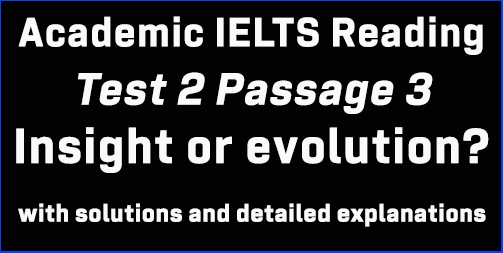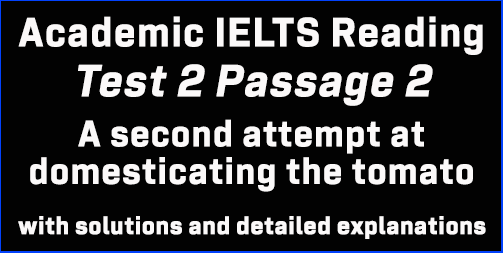IELTS Academic Reading: Cambridge 9, Test 4: Reading Passage 1; The Life and Work of Marie Curie; with top solutions and step-by step detailed explanations
This IELTS Reading post focuses on all the solutions for IELTS Cambridge 9 Test 4 Reading Passage 1 which is entitled ‘The Life and Work of Marie Curie‘ . This is a targeted post for candidates who have lots of problems in finding answers for the Reading module. This post can guide you the best to comprehend each Reading answer without facing much difficulty. Tracing IELTS Reading answers is a slow process and I sincerely hope this post can assist you in your IELTS Reading preparation.
IELTS Cambridge 9 Test 4: AC Reading Module
Reading Passage 1:
The headline of the passage: The Life and Work of Marie Curie
Questions 1-6: (TRUE, FALSE, NOT GIVEN)
In this type of question, candidates are asked to find out whether:
The statement in the question agrees with the information in the passage – TRUE
The statement in the question contradicts the information in the passage – FALSE
If there is no information on this – NOT GIVEN
[For this type of question, you can divide each statement into three independent pieces and make your way through with the answer.]
Question 1: Marie Curie’s husband was a joint winner of both Marie’s Nobel Prizes.
Keywords for the question: husband, joint winner, both Nobel Prizes,
Let’s have a look at the first paragraph. In lines 5-8 the writer says, “With her husband, Pierre Curie, and Henri Becquerel, she (Marie) was awarded the 1903 Nobel Prize for Physics, and was then sole winner of the 1911 Nobel Prize for Chemistry.”
The lines suggest that Marie Curie shared her first Nobel Prize with her husband and Pierre Curie, and Henri Becquerel in 1903, but she won the 1911 Nobel Prize for Chemistry alone (sole winner).
So, the answer is: FALSE
Question 2: Marie became interested in science when she was a child.
Keywords for the question: interested, science, child,
In paragraph no. 2 we find information about Marie Curie’s childhood. We can learn about the brilliance of her memory. But there is no information about her interest in science.
So, the answer is: NOT GIVEN
Question 3: Marie was able to attend the Sorbonne because of her sister’s financial contribution.
Keywords for the question: attend the Sorbonne, sister’s financial contribution,
In the end of paragraph no. 2, the writer says, “.. .. . . From her earnings, she was able to finance her sister Bronia’s medical studies in Paris, on the understanding that Bronia would, in turn, later help her to get an education.”
This means Marie financed her sister Bronia’s education and hoped that one day Bronia would be able to help in Marie’s education.
Then, in the next paragraph, the writer says, “In 1891, this promise was fulfilled and Marie went to Paris and began to study at the Sorbonne (the University of Paris).”
So, it is correct that Marie was able to attend the Sorbonne because her sister contributed to her financially.
So, the answer is: TRUE
Question 4: Marie stopped doing research for several years when her children were born.
Keywords for the question: stop doing research, children, born,
At the beginning of paragraph no. 6, the writer mentions, “The births of Marie’s two daughters, Irene and Eve, in 1897 and 1904 failed to interrupt her scientific work.”
So, it’s a false statement that Marie stopped doing her research for some years when her children were born.
So, the answer is: FALSE
Question 5: Marie took over the teaching position her husband had held.
Keywords for the question: took over, teaching position, husband, held,
In paragraph no. 7, in lines 3-5, the writer says, “On May 13, 1906, she was appointed to the professorship that had been left vacant on her husband’s death, becoming the first woman to teach at the Sorbonne.”
So, the answer is: TRUE
Question 6: Marie’s sister Bronia studied the medical uses of radioactivity.
Keywords for the question: Bronia, studied, medical uses of radioactivity,
There is no mention in this passage on whether Bronia studied radioactivity or not.
So, the answer is: NOT GIVEN
Questions 7-13: (Completing notes with ONE WORD AND/OR A NUMBER):
In this type of question, candidates are asked to write only word and/or a number to complete some notes on the given topic. For this type of question, first skim the passage to find the keywords in the paragraph concerned with the answer, and then scan to find the exact word.
[TIPS: Here scanning technique will come handy. Target the keywords of the questions to find the answers. Remember to focus on Proper nouns, random Capital letters, numbers, special characters of text etc.]
Question 7: When uranium was discovered to be radioactive, Marie Curie found that the element called _________ had the same property.
Keywords for the question: uranium, radioactive, element, same property,
In paragraph no. 4, in lines 3-4, the writer says, “Marie decided to find out if the radioactivity discovered in uranium was to be found in other elements. She discovered that this was true for thorium.”
Here, this was true for = had the same property
So, the answer is: thorium
Question 8: Marie and Pierre Curie’s research into the radioactivity of the mineral known as _______ led to the discovery of two new elements.
Keywords for the question: radioactivity, mineral, known, the discovery of two new elements,
In paragraph no. 5, the writer says in lines 1-5, “Turning her attention to minerals, she found her interest drawn to pitchblende, a mineral whose radioactivity, superior to that of pure uranium, could be explained by the presence in the ore of small quantities of an unknown substance of very high activity. Pierre Curie joined her in the work that she had undertaken to resolve the problem, and that led to the discovery of the new elements, polonium and radium.”
So, it was the research of pitchblende which further progressed to the discovery of two new elements, polonium and radium.
So, the answer is: pitchblende
Question 9: In 1911, Marie Curie received recognition for her work on the element ________.
Keywords for the question: In 1911, received recognition, element,
In paragraph no 7, in the last lines, the author says, “In 1911, she was awarded the Nobel Prize for Chemistry for the isolation of a pure form of radium.”
Here, received recognition for = was awarded the Nobel Prize for
So, the answer is: radium
Question 10: Marie and Irene Curie developed X-radiography which was used as a medical technique for ___________.
Keywords for the question: Irene, X-radiography, medical technique for,
In paragraph no. 8, in the beginning, the writer says, “During World War I, Marie Curie, with the help of her daughter Irene, devoted herself to the development of the use of X-radiography, including the mobile units which came to be known as ‘Litter Curies’, used for the treatment of wounded soldiers.”
Here, medical technique = treatment
So, the answer is: soldiers
Question 11: Marie Curie saw the importance of collecting radioactive material both for research and for cases of _________.
Keywords for the question: importance, collecting radioactive material, research,
In paragraph no. 10, the writer indicates in the very beginning, “One of Marie Curie’s outstanding achievements was to have understood the need to accumulate intense radioactive sources, not only to treat illness but also to maintain an abundant supply for research.”
Here, saw the importance means understood the need, collect means accumulate,
It means that Marie Curie found out the importance of collecting or accumulating radioactive materials for research and treating illness.
So, the answer is: illness
Question 12: The radioactive material stocked in Paris contributed to the discoveries in the 1930s of the ________ and of what was known as artificial radioactivity.
Keywords for the question: radioactive material, Paris, discoveries in the 1930s, artificial radioactivity,
In paragraph no. 10, the writer says that “The existence in Paris at the Radium Institute of a stock of 1.5 grams of radium made a decisive contribution to the success of the experiments undertaken in the years around 1930. This work prepared the way for the discovery of the neutron by Sir James Chadwick and, above all, for the discovery in 1934 by Irene and Frederic Joliet-Curie of artificial radioactivity.”
Here, made a decisive contribution means contributed to
So, the answer is: neutron
Question 13: During her research, Marie Curie was exposed to radiation and as a result, she suffered from _________.
Keywords for the question: exposed, radiation, suffered from,
At the very end of paragraph no. 10, the author says, “A few months after this discovery, Marie Curie died as a result of leukaemia caused by exposure to radiation.”
This means that Marie Curie died suffering from leukaemia, as she was exposed to radiation when doing her research.
So, the answer is: leukaemia
Click here for solutions to Cambridge 9 Test 4 Reading Passage 2
Click here for solutions to Cambridge 9 Test 4 Reading Passage 3




We know the her sister helped her, but whether the help was “financial” or not was not given right?
Marie Curie , now at the highest point of her fame……..researched the chemistry of radioactive substances and their medical applications. It was not her sister but Marie herself so the answer is false in my opinion if am mistaken please reply to my comment
some tests don’t have convincible answers. such as: … collecting radioactive material for both research and case of “illness”
why can’t be “treatment”? both of them seem correct.